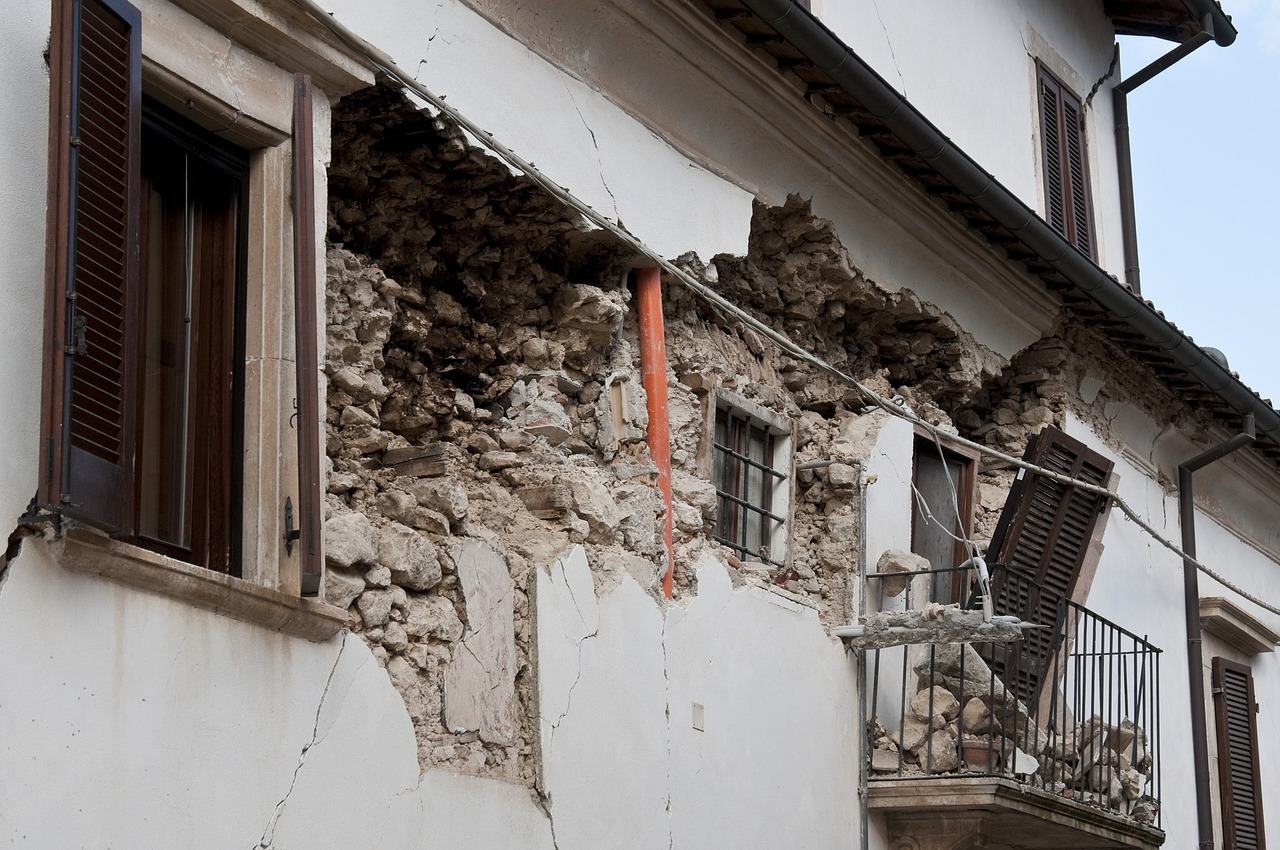Imagine being in the midst of a sudden and powerful earthquake, with the ground shaking beneath your feet and buildings crumbling around you. In such a chaotic and terrifying scenario, having a well-defined Earthquake Emergency Response Plan is absolutely vital. This article will guide you through the essential components of an effective plan, equipping you with the knowledge and tools to ensure your safety and that of those around you during these unpredictable natural disasters. Discover the key steps to take, the precautions to consider, and the resources available to help you navigate through an earthquake emergency with confidence.
Earthquake Emergency Response Plan
Natural disasters, such as earthquakes, can occur unexpectedly and pose a significant threat to the safety and well-being of individuals and communities. To mitigate risks and ensure a timely and coordinated response, it is crucial to have an Earthquake Emergency Response Plan in place. This comprehensive plan outlines the necessary steps and strategies to be followed before, during, and after an earthquake. By understanding the nature of earthquakes, preparing in advance, and implementing well-coordinated response measures, we can minimize the impact of these destructive events and safeguard lives.
Understanding Earthquakes
Before diving into the specifics of an Earthquake Emergency Response Plan, it is essential to have a basic understanding of earthquakes. Earthquakes are caused by the sudden release of energy in the Earth’s crust, resulting in seismic waves that shake the ground. They can vary in magnitude and intensity, from minor tremors to devastating quakes that cause widespread destruction. Understanding the science behind earthquakes and the potential risks they pose is crucial in developing an effective emergency response plan.
Pre-Emergency Preparation
Preparation is the key to effectively respond to any emergency situation, including earthquakes. Before an earthquake strikes, there are several steps that individuals, communities, and organizations can take to ensure they are ready to face such a challenge. These preparations include:
- Developing an awareness campaign to educate the public about earthquake safety measures.
- Conducting regular drills and trainings to familiarize people with evacuation procedures, safe sheltering practices, and first aid techniques.
- Identifying and reinforcing earthquake-prone structures to make them more resistant to seismic activity.
- Establishing communication networks and emergency contact lists to ensure efficient information dissemination during and after an earthquake.
By investing time and effort into pre-emergency preparation, we can significantly enhance the effectiveness of our response when the need arises.

Response Strategy and Preparedness Plan
A well-defined response strategy is crucial for effectively managing an earthquake emergency. It involves developing a comprehensive preparedness plan that outlines the roles and responsibilities of different stakeholders, establishes communication protocols, and identifies resources needed to respond to the situation. This plan should be regularly reviewed, updated, and shared with all relevant parties.
Key elements of a response strategy and preparedness plan may include:
- Activation of an Emergency Operations Center (EOC) to coordinate response efforts and ensure effective communication among different agencies and organizations.
- Mobilization of search and rescue teams, medical personnel, and volunteers to provide immediate assistance and support.
- Establishment of temporary shelters and supply distribution centers to meet the basic needs of affected individuals and communities.
- Collaboration with local, regional, and national authorities to ensure a coordinated response and effective resource allocation.
By having a well-thought-out response strategy and preparedness plan in place, we can minimize the chaos and confusion often associated with emergencies, thereby saving lives and reducing the impact of an earthquake.
Immediate Actions During an Earthquake
When an earthquake strikes, it is crucial to take immediate actions to protect yourself and others around you. Remember the following guidelines:
- Drop to the ground, take cover under a sturdy piece of furniture, and hold on until the shaking stops. This will protect you from falling objects and collapsing structures.
- If you’re outdoors, move to an open area away from buildings, trees, streetlights, and utility wires. Be mindful of potential falling debris.
- If you’re driving, pull over to a safe location away from overpasses, bridges, and power lines. Stay inside the vehicle until the shaking stops.
- If you’re in a crowded public place, do not panic or rush towards the exit. Stay calm, seek cover, and follow instructions from emergency personnel or staff members.
Taking immediate and appropriate actions during an earthquake can significantly reduce the risk of injury and increase the chances of survival.

Post-Earthquake Actions and Safety Measures
After an earthquake, it is important to remain vigilant and take necessary post-earthquake actions to ensure your safety and the safety of those around you. Here are some key measures:
- Conduct a quick assessment of your immediate surroundings for any hazards or potential dangers. If it is safe to do so, check on others and provide assistance if needed.
- Listen to local authorities and follow their instructions regarding evacuation, sheltering, or other safety measures.
- Inspect your home or building for structural damage, gas leaks, or electrical hazards. If you suspect any issues, evacuate the premises and seek professional help.
- Avoid using matches, lighters, or open flame sources, as there may be gas leaks that can lead to fires or explosions.
- Be cautious of aftershocks, as they can cause additional damage to already weakened structures. Take necessary precautions and stay alert.
By practicing these post-earthquake actions and observing safety measures, we can minimize further risks and expedite the recovery process.
Emergency Communication and Warning Systems
In times of crisis, effective communication is vital for timely dissemination of information and instructions. Emergency communication systems play a crucial role in alerting individuals and communities to the presence of an earthquake and providing essential guidance. These systems may include:
- Public notification systems, such as sirens or loudspeakers, to warn people of an impending earthquake or provide updates during an ongoing event.
- Mobile alert systems that send text messages or push notifications to individuals’ phones, providing real-time information and instructions.
- Radio and television broadcasts dedicated to emergency alerts and updates.
- Social media platforms utilized by emergency management agencies and organizations to share information and engage with the public.
By utilizing diverse communication channels and technologies, emergency communication systems ensure the widest possible reach and help people make informed decisions during an earthquake.

Evacuation and Sheltering Procedures
Evacuation and sheltering procedures are critical components of an Earthquake Emergency Response Plan. When the safety of individuals is at risk, it may be necessary to evacuate them from affected areas and provide temporary shelters for those who cannot return home. The following steps help ensure a smooth evacuation process:
- Establish designated evacuation routes and assembly points in advance.
- Clearly communicate evacuation orders using emergency communication systems and public address systems.
- Provide transportation assistance and support to those who require assistance in evacuating.
- Set up temporary shelters equipped with basic necessities such as food, water, bedding, and sanitation facilities.
- Coordinate with local authorities and organizations to ensure the availability and accessibility of adequate sheltering options.
By efficiently managing the evacuation and sheltering procedures, we can protect the well-being of affected individuals and provide them with the support they need during a difficult time.
Emergency Medical Assistance and First Aid
In the aftermath of an earthquake, medical assistance and first aid play a vital role in saving lives and preventing further health complications. It is essential to have trained medical personnel readily available to provide immediate medical support. Key measures include:
- Establishing field hospitals or medical treatment centers near affected areas to provide emergency medical care.
- Mobilizing medical teams, including doctors, nurses, and paramedics, to treat injuries and provide necessary medical attention.
- Conducting triage to prioritize patients based on the severity of their injuries and allocate resources accordingly.
- Training individuals in basic first aid techniques, such as CPR and wound management, to provide initial assistance until professional help arrives.
By ensuring the availability of emergency medical assistance and promoting first aid training, we can enhance the chances of survival and minimize the impact of injuries caused by an earthquake.

Search and Rescue Operations
Search and rescue operations are crucial in locating and extricating individuals who may be trapped or missing following an earthquake. These operations require specialized training, equipment, and coordination among various response teams. Key aspects include:
- Activating search and rescue teams equipped with necessary tools and resources.
- Conducting systematic searches of affected areas to locate and rescue survivors.
- Providing necessary medical attention to rescued individuals and coordinating their transportation to medical facilities, if required.
By prioritizing search and rescue operations and ensuring effective coordination among response teams, we can maximize the chances of finding and saving lives in the aftermath of an earthquake.
Recovery and Rehabilitation Process
The recovery and rehabilitation process following an earthquake is a crucial phase that involves rebuilding infrastructure, restoring essential services, and providing support to individuals and communities affected by the disaster. This phase may include:
- Assessing the extent of damage and initiating efforts for reconstruction and rehabilitation.
- Collaborating with relevant authorities and organizations to restore critical infrastructure, such as roads, power supply, water, and sanitation facilities.
- Providing psychological support and counseling services to individuals affected by the traumatic experience.
- Engaging the community in recovery efforts, such as through volunteer programs and community-driven initiatives.
By focusing on the recovery and rehabilitation process, we can help affected areas rebuild, restore normalcy, and foster resilience against future earthquakes.
In conclusion, an Earthquake Emergency Response Plan is essential to effectively mitigate the risks and respond to the challenges posed by earthquakes. By understanding the nature of earthquakes, preparing in advance, implementing appropriate response measures, and prioritizing the well-being of individuals and communities, we can minimize the impact of these devastating events and ensure a safer future for all.




